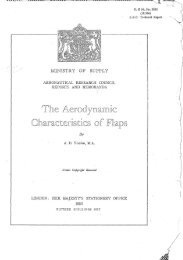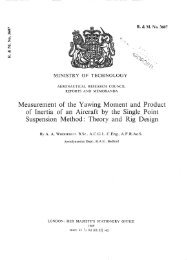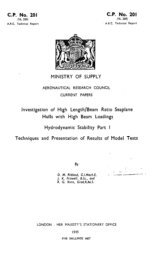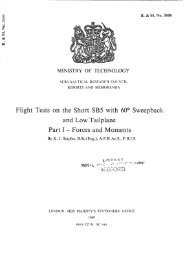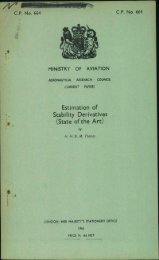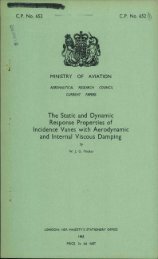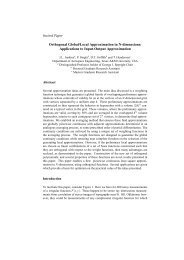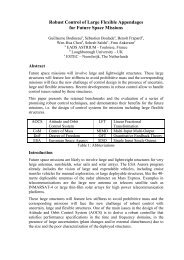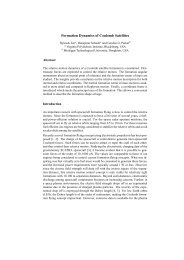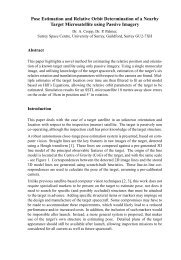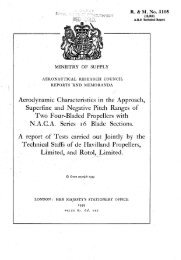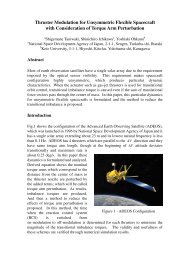The Prediction of Helicopter Rotor Hover Performance using a ...
The Prediction of Helicopter Rotor Hover Performance using a ...
The Prediction of Helicopter Rotor Hover Performance using a ...
Create successful ePaper yourself
Turn your PDF publications into a flip-book with our unique Google optimized e-Paper software.
are represented by bound vortex lines divided into a number <strong>of</strong> segments each<br />
having a different circulation strength corresponding to the variation <strong>of</strong> the<br />
radial load distribution. A trailing vortex filament must originate at the<br />
ends <strong>of</strong> the blade segments to satisfy the Helmholtz law <strong>of</strong> conservation <strong>of</strong><br />
vorticity. <strong>The</strong>se trailing vortex filaments, which represent the wake, take a<br />
prescribed contracting helical path below the rotor and are approximated in the<br />
theory by a series <strong>of</strong> short straight vortex elements. <strong>The</strong> strength <strong>of</strong> the<br />
trailing vortex filament is constant along its length and is equal to the<br />
difference in the circulation between two adjacent bound vortex segments, Fig.1.<br />
<strong>The</strong> flow at the blade is assumed to be two-dimensional and the aerodynamic<br />
characteristics are evaluated at the midpoint <strong>of</strong> each blade segment <strong>using</strong><br />
measured two-dimensional aer<strong>of</strong>oil lift and drag coefficients.<br />
2.2 <strong>The</strong> wake-momentum analysis<br />
<strong>The</strong> determination <strong>of</strong> the inflow angle or downwash velocity distribution is<br />
the major difficulty in predicting rotor hover performance. Landgrebe states<br />
that the velocity induced solely by the wake may be used, but section 4 shows<br />
that this is unsatisfactory in practice. <strong>The</strong> wake induced velocity <strong>of</strong>ten over<br />
estimates the magnitude <strong>of</strong> the downwash distribution leading to high induced<br />
power factors, especially for rotors with a high disc loading. <strong>The</strong> predicted<br />
thrust to power relationship is improved if the wake induced velocity is<br />
factored by the ratio <strong>of</strong> the momentum value <strong>of</strong> downwash to the mean <strong>of</strong> the wake<br />
induced velocity, but this tends to overestimate the blade load distribution near<br />
the tip. A much closer integration <strong>of</strong> the wake induced velocity with momentum<br />
theory is required and is most easily obtained by <strong>using</strong> the wake-momentum<br />
analysis <strong>of</strong> Rorke and Wells . Strip element-momentum theory is combined with the<br />
wake induced velocity to ensure that the thrust produced by each element <strong>of</strong> the<br />
blade is consistent with momentum theory.<br />
<strong>The</strong> thrust, AT. , produced by an element <strong>of</strong> the blade <strong>of</strong> length Ar.<br />
centered on r. is<br />
l<br />
from momentum theory, and<br />
AT. = p(27rr. Ar.)v.2v. (1)<br />
AT, = ip Kfir^ 2 + v i) bc i Ar i C L cos 1. " C sin nl (2)



